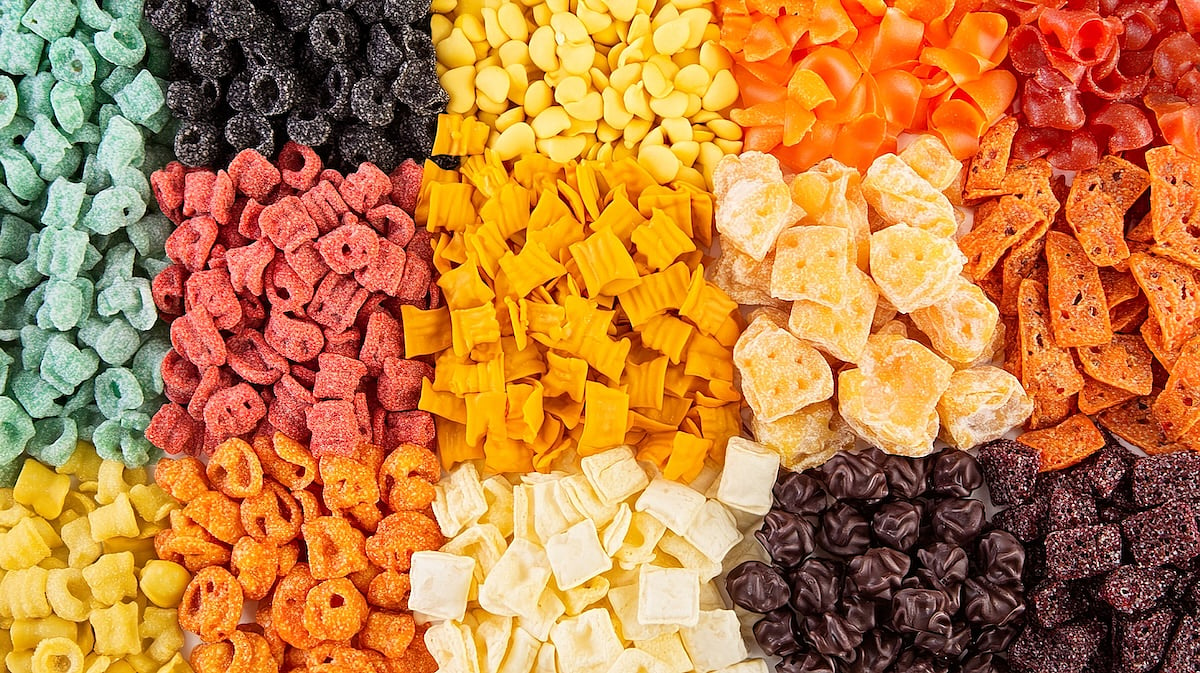Get Healthy!

- Dennis Thompson
- Posted June 25, 2025
1 in 5 U.S. Food Products Contain Synthetic Dyes
Synthetic food dyes are added to 1 in 5 packaged foods and drinks sold by top U.S. food manufacturers, a new study says.
The most common dye was Red 40, which was present in 1 out of 7 (14%) products, according to the paper published today in the Journal of the Academy of Nutrition and Dietetics.
“Products containing synthetic dyes also had a much higher average total sugar content compared to products without synthetic dyes, suggesting that companies are using synthetic food dyes to market sweet foods and beverages,” lead researcher Elizabeth Dunford said in a journal news release. She’s a nutrition consultant with the University of North Carolina at Chapel Hill’s Gillings Global School of Public Health.
Red 40 is among eight synthetic dyes that U.S. Health and Human Services Secretary Robert F. Kennedy Jr. has vowed to remove from the American food supply.
The U.S. Food and Drug Administration (FDA) announced in April it was moving to revoke authorization for the dyes Citrus Red 2 and Orange B, and would work with industry to eliminate Red 40, Green 3, Yellow 5, Yellow 6, Blue 1 and Blue 2 from the food supply by the end of 2026.
“These poisonous compounds offer no nutritional benefit and pose real, measurable dangers to our children’s health and development,” Kennedy said in an April news release. “That era is coming to an end.”
The new study shows how widespread these dyes have become at the supermarket, researchers said.
For the study, researchers evaluated the ingredients in nearly 39,800 grocery store products produced by the top 25 U.S. food manufacturers, using a database that represents more than 80% of products sold in America.
Children are more likely to be exposed to these dyes, results show.
About 28% of products in the top five food categories marketed to children contained synthetic dyes, compared with 11% in the remaining categories. Those categories included confections, sugary beverages, ready-to-eat meals, breakfast cereals and baked goods.
Sports drinks (79%), beverages made from concentrates (71%) and confections (54%) were the products most likely to contain synthetic dyes, researchers found.
Carbonated beverages (30%), confections (26%) and sports drinks (14%) represented the lion’s share of products containing synthetic dyes purchased by Americans.
“We included sales data in our analysis of synthetic dye exposure, which may help to inform regulatory policies in this area,” Dunford said.
“Although certain food categories may contain more products with synthetic dyes, it is also important to consider what foods consumers are buying, as even food categories with smaller proportions of synthetic dyes may be purchased and consumed in significant amounts and thus contribute more to overall dietary intake of dyes,” she added.
On average, products with synthetic dyes also contained 141% more total sugar compared to offerings without the dyes, researchers said.
But products with synthetic dyes had lower levels of sodium and saturated fat.
“There are a number of policy options to limit dye exposure, including bans and warning labels,” researcher Thomas Galligan said in a news release. He’s principal scientist for food additives and supplements at the Center for Science in the Public Interest in Washington, D.C.
“Companies can also voluntarily reduce the use of synthetic dyes in their products,” he added. “Our results showing a range in companies’ proportional use of dyes in many food categories suggests that reduction in use is readily feasible.”
More information
The Center for Science in the Public Interest has more on the history of synthetic food dyes in the U.S.
SOURCES: Academy of Nutrition and Dietetics, news release, June 25, 2025; Journal of the Academy of Nutrition and Dietetics, June 25, 2025





